by Ocean Robbins: Some things only appear expensive until you understand what goes into them…
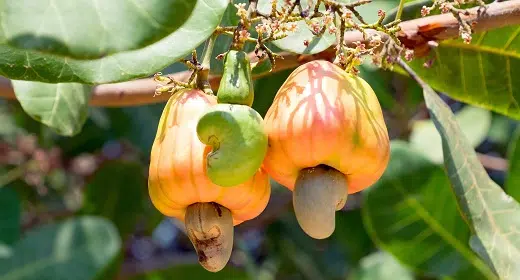
We are proud to announce a new partnership with John and Ocean Robbins and the Food Revolution to bring our readers Summits, Seminars and Masterclasses on health, nutrition and Earth-Conscious living.
Sign Up Today For the Healthy Brain Masterclass
Charging $60 to change the oil and filter in your car might seem like highway robbery unless you’ve tried it yourself. After buying the oil, the air filter, the pan to catch the drippings, and the weirdly angled plastic funnel, you’ll already be out $40. And then there’s crawling under the vehicle, wrestling open the drainage nut, getting dirty and uncomfortable, and having to deal with bottling and recycling the old oil. All of a sudden, paying someone fairly to do it for you might look like quite a bargain.
When you go to the grocery store and see a bag of cashews going for around $15 a pound or more, you might also resent the high price. But when you learn how cashews are processed, so you can eat them for a snack or turn them into creamy plant-based sauces and dips, you’ll have a new appreciation for how much they cost.
Many plant-based eaters depend upon cashews for raising their culinary game. From cashew butter to cashew milk to cashew cheese and yogurt, to Indian, Southeast Asian, and African dishes enhanced by crunchy and creamy cashew pieces, this drupe has enabled dairy-free cooks to mimic much of the richness of cow’s milk without harming animals or degrading the environment.
And they’re not only versatile and delicious — as unofficial members of the nut family — cashews also pack a nutritional punch.
But cashews have a somber side, too, as we’ve learned by paying attention to their production and where they come from — and the ethical issues that surround their journey from tree to table. In this article, we’re going to look at the pros and cons of cashews, from their health benefits and culinary uses to ethical and sustainability concerns.
Where Do Cashews Come From?
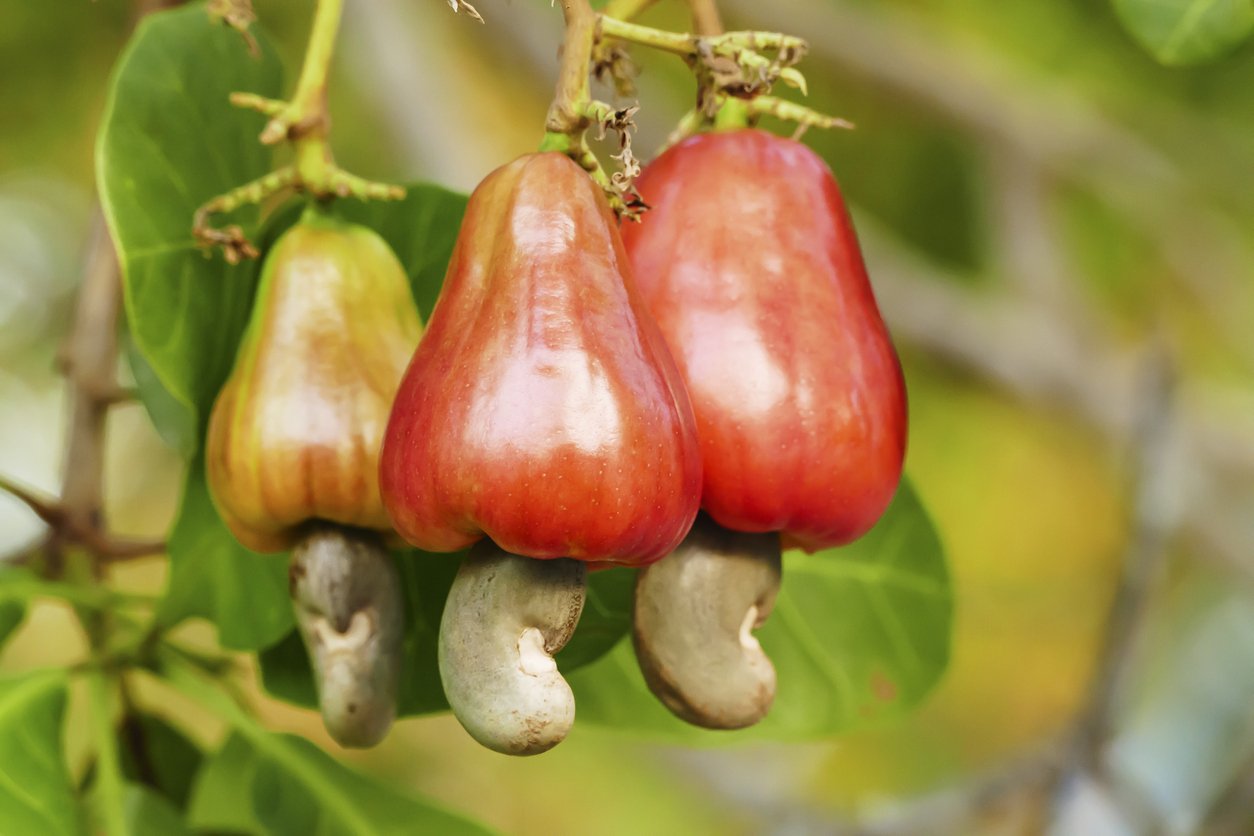
As you might expect, cashews come from the cashew tree, a tropical plant that originated in Brazil and has been cultivated in many other tropical regions of the globe. Vietnam and India are considered the top producers of cashews, but that’s a misleading designation. Poorer countries like Ivory Coast, Burundi, and Benin are among the largest exporters of cashews. But they are not considered producers because what they export has to undergo extensive processing before it reaches edible form.
It turns out that cashews aren’t really nuts. Rather, they’re drupe seeds, like almonds — and plum and peach pits. To further muddle things up, these nuts-that-aren’t-really-nuts grow at the bottom of a fruit called a “cashew apple,” which isn’t really a fruit, but what’s known as a “false fruit” because it doesn’t form from the ovary of the plant.
The cashew apple is also edible but rarely exported since it has a short shelf life and doesn’t travel well. Within its countries of origin, the cashew apple is often juiced or dried, cooked into curries, fermented into vinegar, or used to make preserves, chutneys, and jams. In the Indian state of Goa, it’s fermented and distilled to make a seriously alcoholic drink known as feni. And it has many medicinal uses as well.
At the base of the cashew apple grows a kidney-bean-shaped hard shell with a single seed inside. That seed is the cashew “nut,” but don’t even think about picking it, cracking it open, and eating it like you would a walnut or pecan. As I said, that nut needs to be processed almost beyond recognition.
Now that we’re staring directly at the weirdness of this plant, guess what it’s related to botanically. If you said “poison ivy,” you’d be right. And as we’ll see a little later, that fact is why cashews represent huge occupational challenges for the workers who process them for our benefit.
Cashew Nutrition Facts
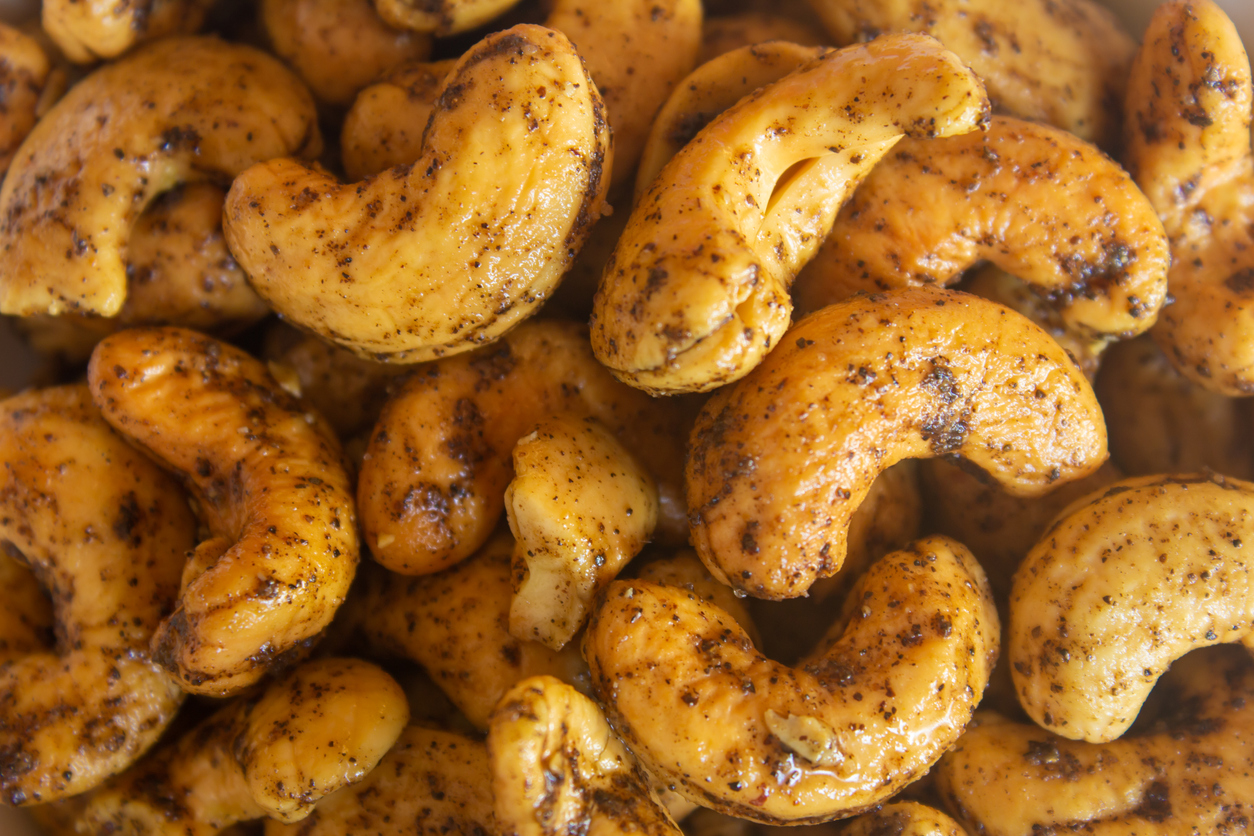
Cashews are a good source of plant-based protein. They’re also pretty high in fat, providing a mix of saturated and unsaturated fats. And like other plant-based sources of fat, cashews reduce your risk of premature death when you substitute them for animal-based fats.
Cashews are about the micronutrients as much as the macros. They’re a good source of vitamin K and B vitamins, as well as important minerals like iron, magnesium, phosphorus, zinc, copper, and manganese. They’re also a decent source of the elusive mineral selenium. And in a victory for those of us who prefer roasted nuts (and drupes!) to raw ones, it appears that roasting cashews actually increases their antioxidant power.
Cashews also contain so-called “antinutrients” like lectins, phytates, and oxalates, which, despite what some wellness influencers claim, are not a problem for most people. If you want to maximize mineral absorption, you can neutralize the effect of these compounds by soaking your cashews for a few hours, or eating them with allium vegetables (such as onions and garlic) or foods containing vitamin C.
If you’re looking to lose weight, keep in mind that the high-fat content of cashews, coupled with their very low water content, means they are high in calories. In fact, an ounce of cashews delivers a whopping 155 calories, which comes out to almost 2,500 calories per pound. And given that they’re often roasted and salted to make them even more delicious, they’re pretty darn easy to overeat.
Health Benefits of Cashews
What do we know about how eating cashews can support your health?
Cashews and Heart Health
For starters, cashews appear to promote cardiovascular health. A 2017 study of American adults with high LDL (“bad”) cholesterol found that when they ate more cashews, their LDL levels dropped while their HDL (“good”) cholesterol remained constant.
In an Iranian study of type 2 diabetics published in 2019, one group was asked to consume 10% of their calories from cashews. The control group ate the same number of calories, but without the cashews. The cashew group didn’t gain weight but did see their cholesterol shift to a much more favorable ratio of “good” to “bad” cholesterol.
A meta-analysis of five other modest studies on cashews and cardiac health published that same year found that cashew consumption was correlated with lower triglyceride levels and lower systolic and diastolic blood pressure.
Cashews and Bone Health
The nutrients in cashews, and particularly the minerals magnesium and copper, appear to support bone and joint health, too. Male rats with chemically-induced osteoarthritis (ugh — our view on the use of animals in medical research is here) who were fed cashew nuts demonstrated fewer and less severe “pain-like behaviors” and had improved pain-related biomarkers.
Are Cashews Good for Your Brain?
Also thanks to their tryptophan content, cashews may protect the brain and nervous system from the effects of aging — specifically, they may slow cognitive decline.
Cashews and Depression
Cashews may also help enhance your mood, and not just because they’re so darn yummy. They’re one of the richest sources of the amino acid tryptophan, a precursor to the neurotransmitter serotonin — one of the body’s endogenous antidepressants. The magnesium in cashews also fights depression and anxiety through its positive effects on the nervous system. It’s also crucial for maintaining stable blood sugar levels (which are also relevant to your mood).
What About Cashew Allergies?
Tree nuts represent one of the seven major allergenic food categories. Despite not being true tree nuts, cashews can still be potent allergens, causing severe reactions in susceptible people that can persist long-term, compared with some other food allergies. Both children and adults can be affected.
While the prevalence of cashew allergy appears to be increasing, it’s still relatively uncommon. A 2021 study of over 500 children with food allergies found that just over 3% of them showed sensitivity to cashews. The percentage among the general population is likely far lower.
With a couple of exceptions, cashews are good for the people eating them. But what about their effects on the planet and agricultural workers?
Are Cashews Sustainable?

Cashews perform surprisingly well in most measures of sustainability. In terms of water use, they’re just a little less thirsty than almonds, which are among the crops requiring the most hydration. But unlike almonds grown in the US, cashews are mostly harvested from trees in their natural environment, the tropics. So they receive their water allotment from rain (also known as “green water”) rather than the underground aquifers that supply the almond trees in drought-prone California.
True, that means the cashews consumed in the US are imports, which adds to their carbon footprint. But this is offset somewhat by the trees’ ability to sequester carbon in their biomass and in the soil.
Dairy substitutes made from cashews, such as milk, yogurt, spreads, and cheeses, are far more environmentally friendly than their dairy counterparts, especially when you consider greenhouse gas emissions.
Adding to the cashew advantage, the by-products of cashew processing have many other uses. The shell oil (which, confusingly, isn’t an oil, but rather a mixture of cardol and anacardic acid) appears in over 200 different patents. It’s an ingredient in things that must resist friction, heat, and acids, such as brake linings and clutch plates for the automotive industry, and also helps make glue and lightweight carbon-composite products such as rockets and high-end kayaks.
Cashew wood is also remarkably insect-resistant and favored for packing crates and bookcases. And the gum of the cashew tree works as an insect-repellent glue in bookbinding.
Should You Buy Organic Cashews?
Another plus for the planet is that a lot of cashew farming in Vietnam, Thailand, and India (major suppliers of the US market) occurs on “small, often wild or naturalized plantations” that don’t use any fertilizers or pesticides.
This doesn’t mean that the cashews you buy are guaranteed to be organic, though. There is a trend to apply pesticides even to naturally pest-resistant cashews, as they’ve been shown to slightly increase yield. The good news is that cashew nuts naturally have two protective coverings — the outer shell and the inner “testa” layer — shielding them from the direct application of pesticides. FDA testing did not find pesticide residue in most of the cashews it sampled. And so, you don’t have to buy organic cashews to avoid pesticides — although buying organic is generally better for people and the planet.
Overall, cashews are relatively sustainable, especially in comparison to meat and dairy.
Cashew Ethics

But while cashews can be nutritious and environmentally sustainable, the cashew industry is unfortunately notable for its track record of harming workers. To understand the scope and severity of the problem, let’s first look at what has to happen for cashews to get from a tree to your mouth.
Cashew Processing
First, it’s extremely labor intensive to harvest the nuts. Each cashew apple has one nut, which workers must harvest by hand. (One of the reasons they’re so expensive compared to many other nuts.)
The main issue, however, is that the cashews are toxic to the touch before and during processing. The shell that surrounds each cashew nut contains the toxic oil urushiol, which is the active ingredient in poison ivy. When urushiol touches human skin, it causes rashes, itching, blistering, and swelling.
As if that isn’t bad enough, the shell is also a source of phenolic resin, which contains formaldehyde and anacardic acid, which is also a powerful skin irritant.
Cashew nut consumers don’t have to worry about any of these compounds because they’re removed during processing. Once the shells are peeled, dried, and subjected to heat, there are no more toxins.
Harmful Effects on Cashew Workers
Unfortunately, the workers doing the cutting, peeling, drying, and heating of cashew processing experience all these side effects during their long daily shifts. Since they’re paid when they meet production quotas, rather than an hourly wage, they have to rush just to make the equivalent of $2–3 per day. And rushing while hand-cutting or peeling the fragile drupes leads to nasty skin burns.
Gloves would help but are not common for three reasons. First, the factories that employ the cashew processors (who are nearly all women) force them to pay for their own gloves. Second, the thin gloves that workers can afford often break, rendering them useless. And third, the women say that gloves make the work harder, slow them down, and keep them from earning what they need to feed their families.
Here’s an 8-minute heartbreaking video that shows why cashews are so expensive. And it illustrates the effects of cashew processing on a group of women in Sri Lanka. Trigger Warning: it shows disturbing images of the skin damage the women experience due to constant exposure to the corrosive oils and acids in the cashew shells.
Other Cashew Industry Labor Issues
As you can imagine, the only people who take such jobs are those with few other options. In fact, a Human Rights Watch (HRW) report from 2011 revealed that Vietnamese cashew processing facilities were forced-labor camps for those convicted of being drug addicts. TIME magazine reported that prisoners who resisted were “beaten with truncheons, given electric shocks, locked in isolation, deprived of food and water, and obliged to work even longer hours…”
And very few workers are covered by health insurance, even when such coverage is mandatory by the government.
In response to all this, there are now global campaigns working to end the horrific practices of the “blood cashew” industry.
Fair-Trade Cashews
Not all cashew plantations and processing plants engage in the heinous — and profitable — practices described above. If you want to enjoy cashews and cashew products without contributing to the mistreatment of workers, you can.
One fair-trade cashew brand that I like is Uprise Foods. You can purchase nuts directly from their website or on Amazon here. Beyond the Nut is another fair-trade brand — and you can receive 10% off your first order from them with the code FOODREV10. These companies work with facilities that provide a fair wage, provide castor oil for workers to coat their skin to prevent weeping sores (while keeping their hands nimble enough to do the work), and give back to the local communities to help lift them out of poverty.
How to Store Cashews
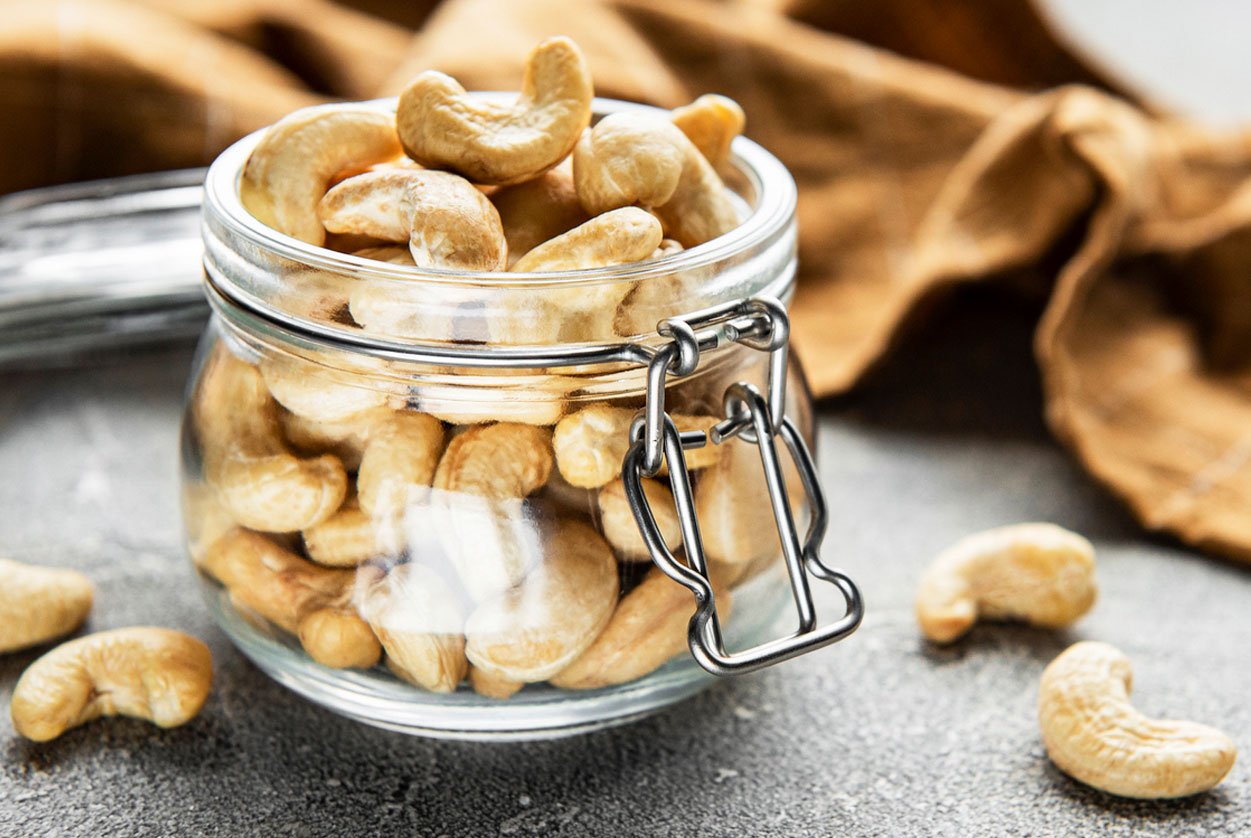
Once you’ve bought fair-trade cashews, make sure you store them properly so you can enjoy them. It’s best to keep them in an airtight container — glass jars and silicone bags work nicely. If you have a large quantity that you aren’t going to use up quickly, store them in your refrigerator or freezer, where they can last for up to six months.
If you keep cashews in your pantry, make sure to protect them from light and heat; that way, you can enjoy them for up to three months.
Like other nuts (and drupes!), cashews can go bad if stored for too long in unfavorable conditions. Cashews will go rancid when exposed to light, air, and heat for too long. You’ll know if your cashews are ready for the compost if they have a harsh and bitter taste or an odor that reminds you of old paint or nail polish remover.
How to Use Cashews
You can, of course, snack on cashews all by themselves. You can also add them to recipes or use them as toppings for both sweet and savory dishes.
Here are some typical uses for cashews:
- On their own or on a charcuterie board as a snack; raw or roasted with herbs, spices, or even lemon juice
- Mixed into trail mix, granola, or energy balls
- Cashew butter
- Made into another sauce or condiment like cashew sour cream or a cashew spread
- Cashew cheese
- Used as a topping for stir-fry and other Asian dishes
- As a topping for plant-based yogurt or oatmeal
- Made into cashew milk or yogurt
Cashew Recipes
Homemade yogurt is an economical, nutritious, and delicious base in a range of recipes. Cashew cheese in an already-tasty, feeds-a-crowd veggie casserole, ups the “everyone will love this” quotient, just about ensuring that not a bite will go to waste. And, seasoned and roasted cashews become that special something that will delight your taste buds — a few will go a long way, either as a snack or in elevating your favorite dishes (plus, they store well!).
1. Easy Homemade Cashew Yogurt
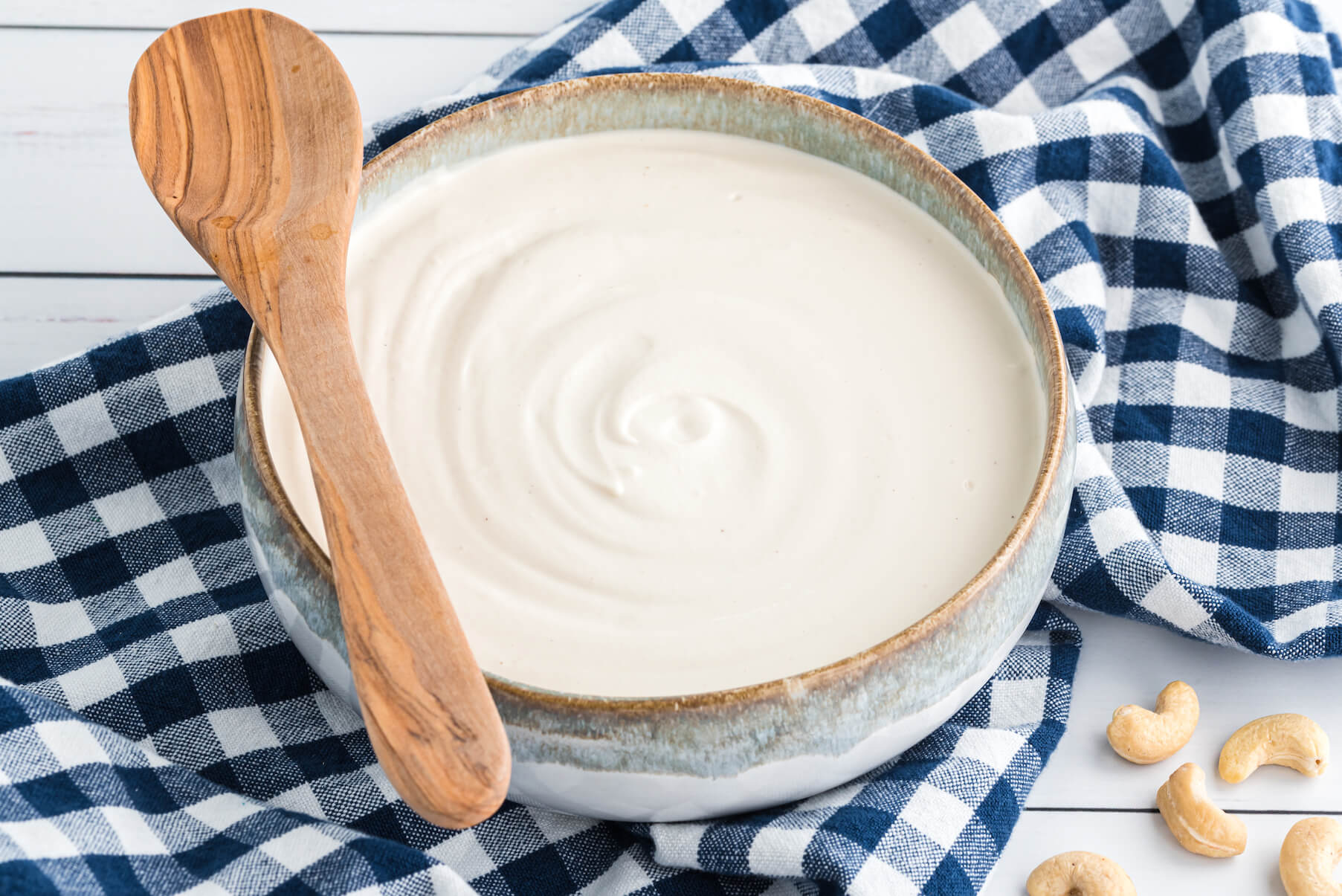
This super simple, five-ingredient, plant-based yogurt will get you excited to be in the kitchen! Because cashews have a decent amount of plant-based fat, they create that creamy mouthfeel of traditional yogurt. Easy Homemade Cashew Yogurt is certainly worth the wait while healthy bacteria do their job making it nice and tangy. Check out the Chef’s Notes for all the ways you can use this creamy treat.
2. Broccoli Potato Casserole with Cashew Cheese
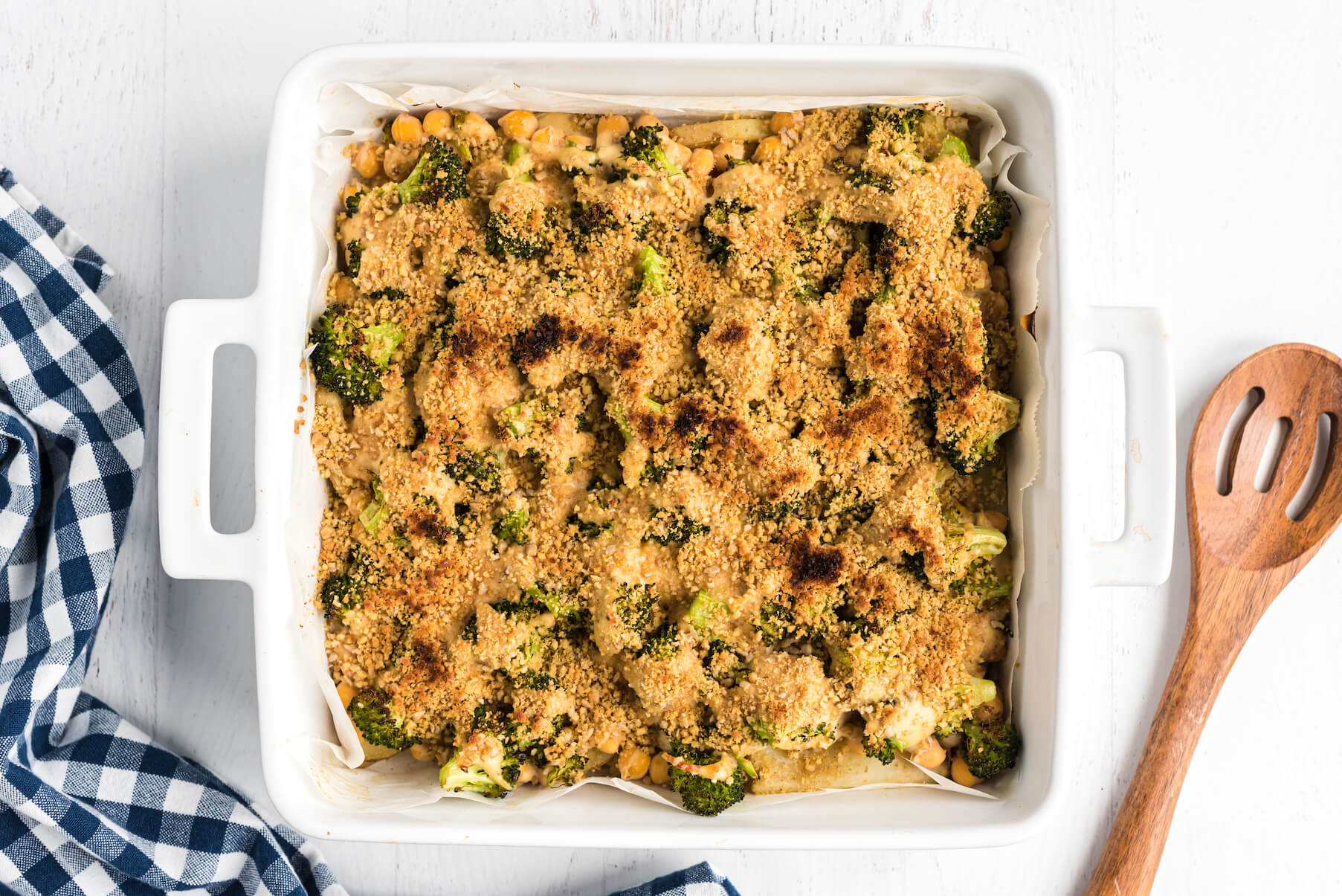
Cashews are a magical plant-based ingredient that easily blends into a silky and creamy dairy-free cheese or sauce to enhance just about any recipe. In Broccoli Potato Casserole with Cashew Cheese — a comforting, creamy, and mouthwatering meal — they are truly a game changer! This wholesomely cheesy casserole is an ideal plant-based dish for the entire family!
3. Chili-Spiced Roasted Cashews
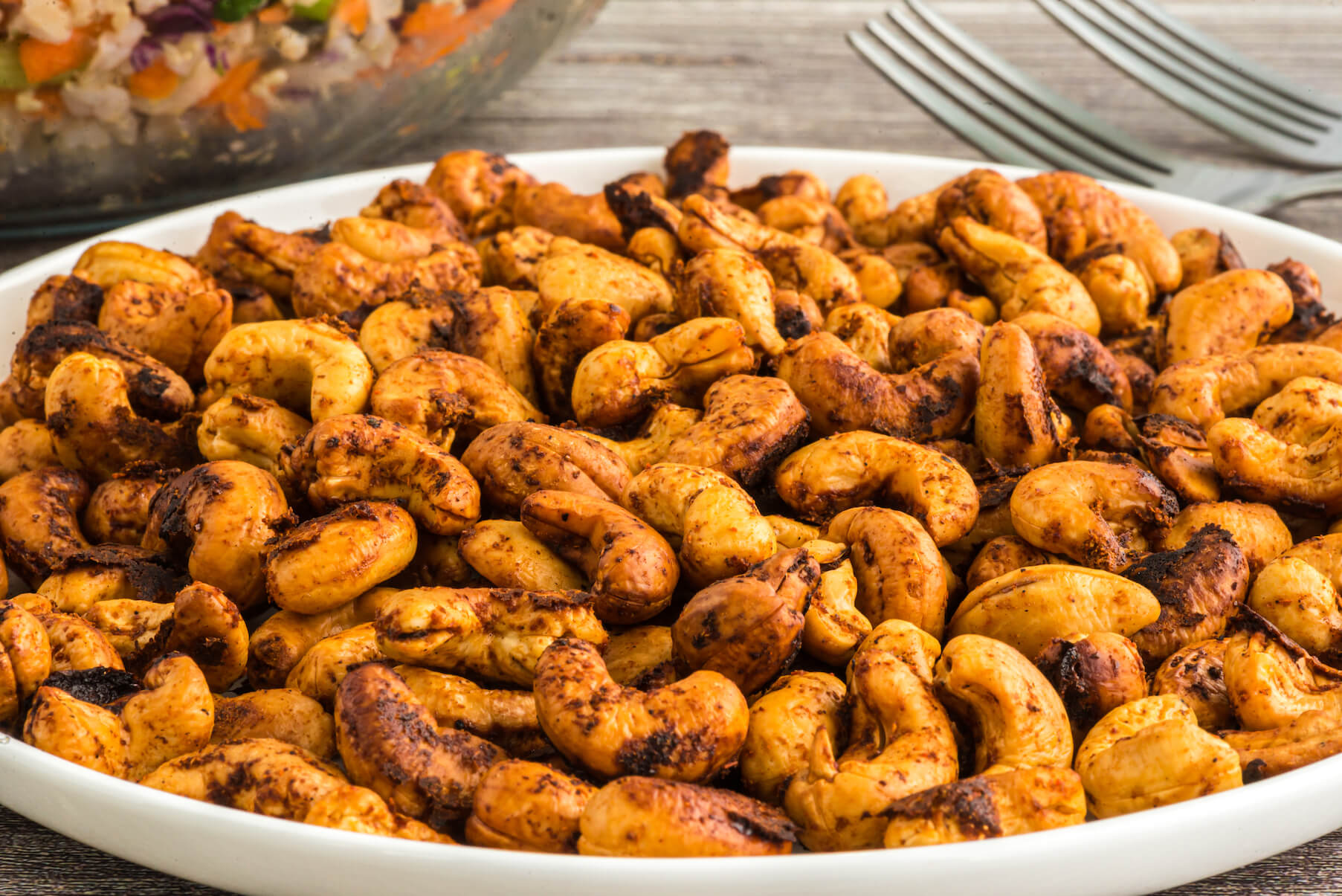
Their slightly sweet yet neutral flavor makes cashews a perfect vehicle for the creative use of your favorite flavors, herbs, and spices (and roasting them makes them even more deliciously nutty!). Here, fresh lime, fragrant chili powder, and robust tones of garlic make way for a slightly sweet and savory snack — for any time a crunchy craving hits. What’s more, you can add them to your favorite savory plant-based dishes for an extra kick of flavor and crunch!
Enjoy Cashews Responsibly
The cashew is a delicious “nut” that can be enjoyed as is, and also makes a versatile substitute for dairy. It’s healthy and nutritious, though some people need to avoid it because of allergies. And because cashew processing plants have a track record of mistreating and underpaying their employees, I recommend choosing only fair-trade certified cashews, even if they cost a bit more than regular brands.










































